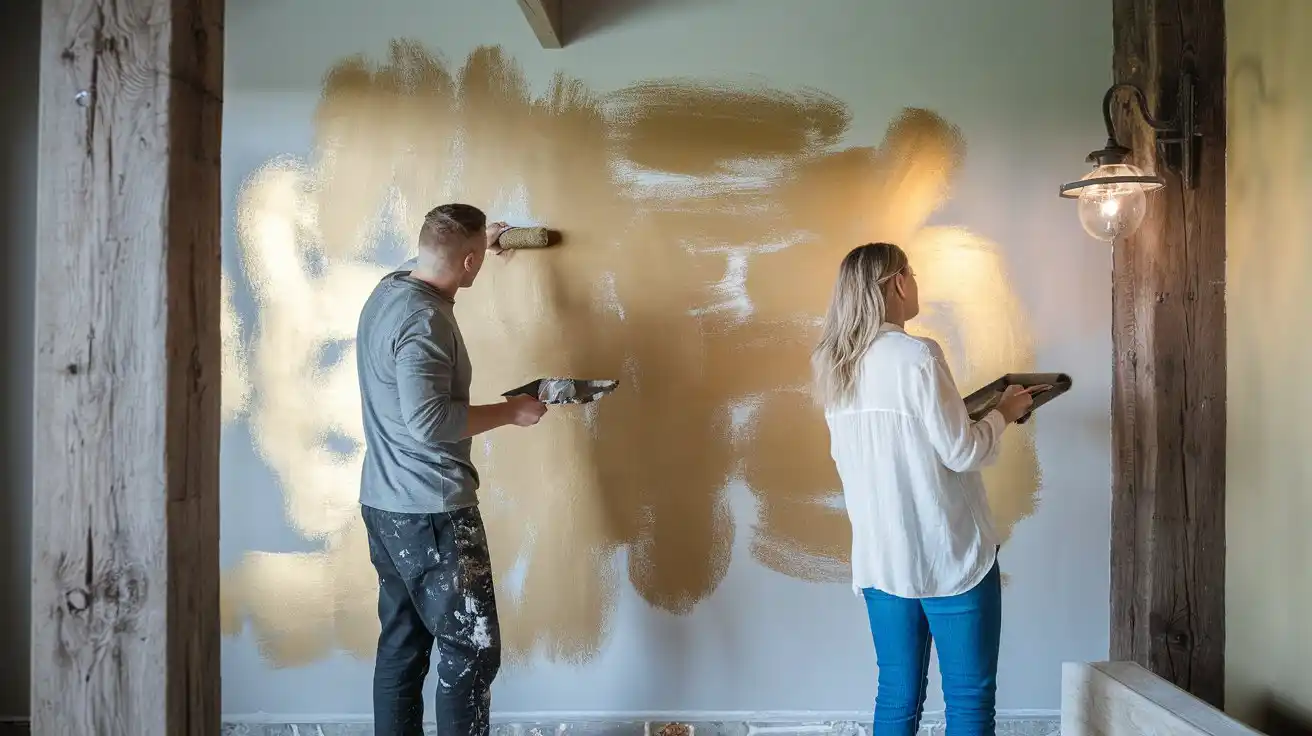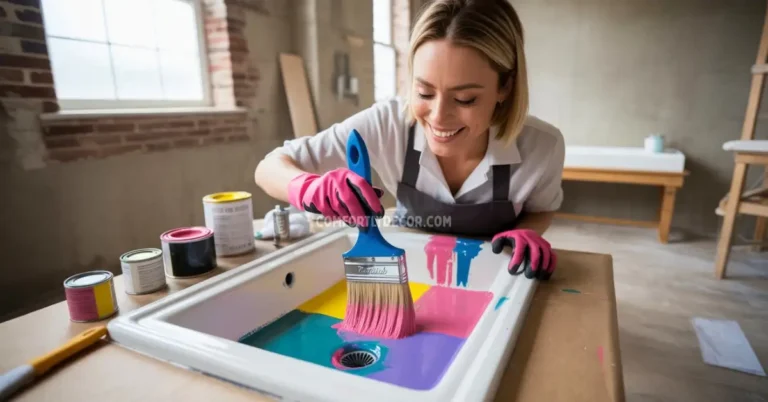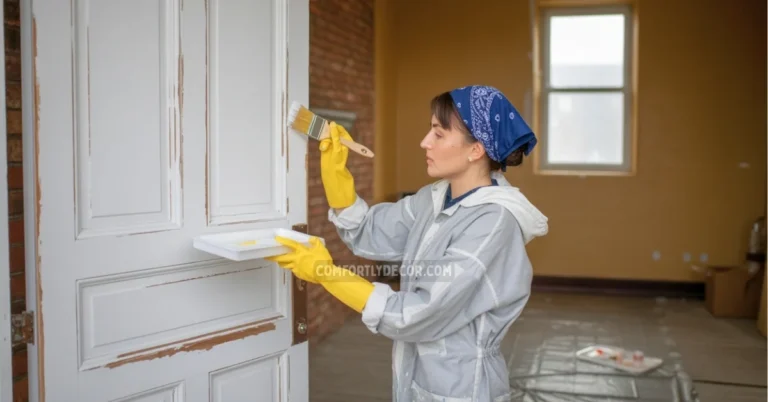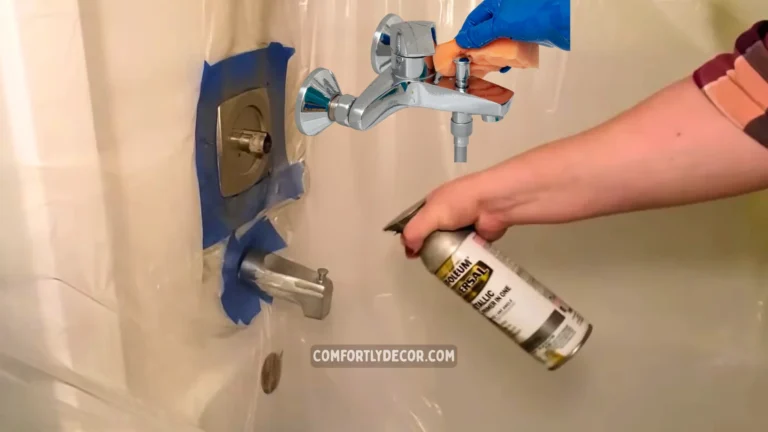Adding Elegance to Your Home With Metallic Paint
Want to transform an ordinary wall into a dazzling statement piece? Metallic paint can do just that. Known for its unique shimmer and reflective qualities, metallic paint can add a touch of luxury and sophistication to any space. Whether you’re looking to create a decadent feature wall or experiment with creative textures, this guide will walk you through everything you need to know about painting with metallic paint.
From understanding the types of metallic paints to mastering painting techniques, you’ll find step-by-step guidance to achieve professional results—even if you’re new to painting. Let’s get started.
What is Metallic Paint and Why Use It?
Metallic paint contains tiny metal particles, such as aluminum, that catch and reflect light, giving your walls a distinctive shimmer. It’s perfect for creating depth and visual interest in rooms that could use a little extra drama.
Why Choose Metallic Paint?
- Visual Appeal: Its reflective finish makes walls stand out, creating a focal point in any room.
- Versatility: Works beautifully on walls, furniture, and decorative trim.
- Luxurious Atmosphere: Colors like gold, silver, bronze, and pewter add an elevated feel to your space.
- Lighting Enhancement: Metallic paint reflects natural and artificial light, brightening your room and adding dimension.
Types of Metallic Paints
Before grabbing your brush, it’s important to choose the right metallic paint for your project. There are two primary types to consider:
1. Water-Based Metallic Paints
| Pros | Cons |
|---|---|
| Easy clean-up with soap and water. | May require multiple coats for even coverage. |
| Low odor, making it ideal for indoor use. | Less durable than solvent-based options. |
| Dries quickly. |
Best Uses: Living rooms, bedrooms, and other low-traffic areas.
2. Solvent-Based Metallic Paints
| Pros | Cons |
|---|---|
| Provides a highly durable and glossy finish. | Strong fumes require proper ventilation. |
| Excellent for high-traffic areas or surfaces like doors and furniture. | Clean-up requires mineral spirits. |
- Safety Precautions: Always wear a mask and ensure proper air circulation when using solvent-based metallic paints.
Tools and Materials You’ll Need
To achieve professional results, make sure you have the right tools on hand. Here’s what you’ll need:
- Paintbrushes for detailed areas, such as edges and corners.
- Foam Rollers for smooth and even coverage on walls.
- Sprayers for a sleek, streak-free finish over large surfaces.
- Primer to create an even base.
- Painters’ Tape to protect trims and edges.
- Drop Cloths to safeguard your floors and furniture.
- Sandpaper for smoothing imperfections on the wall.
Pro Tip:
Invest in high-quality tools to minimize visible brush strokes and roller marks. It’s worth the extra cost for an impeccable finish.
Preparing the Wall
Preparation is the key to a flawless metallic finish. Follow these steps to ready your wall:
1. Clean the Wall
Remove dust, dirt, and grease using a mild soap solution. A clean surface ensures the paint adheres properly and reduces imperfections.
2. Repair Imperfections
Check for cracks, holes, or dents in the wall. Fill these areas with spackle, then sand until smooth. Metallic paint tends to magnify flaws, so this step is crucial.
3. Apply Primer
A primer layer is essential for even color distribution and better adhesion. Opt for a tinted primer that complements your chosen metallic paint color. Apply evenly and allow it to dry completely before painting.
Step-by-Step Guide to Painting with Metallic Paint
Now that your wall is prepped, it’s time to bring it to life with metallic paint. Follow these steps for stunning results:
1. Start with Edges and Corners
- Begin by using a small, angled brush to carefully cut in along the edges, corners, and trims where a roller can’t easily reach. This step helps define the borders of your painting area and ensures clean edges.
- Apply the paint using smooth, even strokes to minimize uneven buildup or drips. Take your time here—this foundation will make the rest of the process much easier.
2. Roll On the Paint
- Load a foam roller with metallic paint, ensuring it’s evenly saturated but not dripping. Metallic paints can be tricky, so avoid overloading the roller to prevent blotchy application.
- Roll the paint onto the wall in vertical sections, working from the top down. Maintain a wet edge by blending one section into the next while the paint is still fresh to avoid visible lap lines. This step creates a seamless finish.
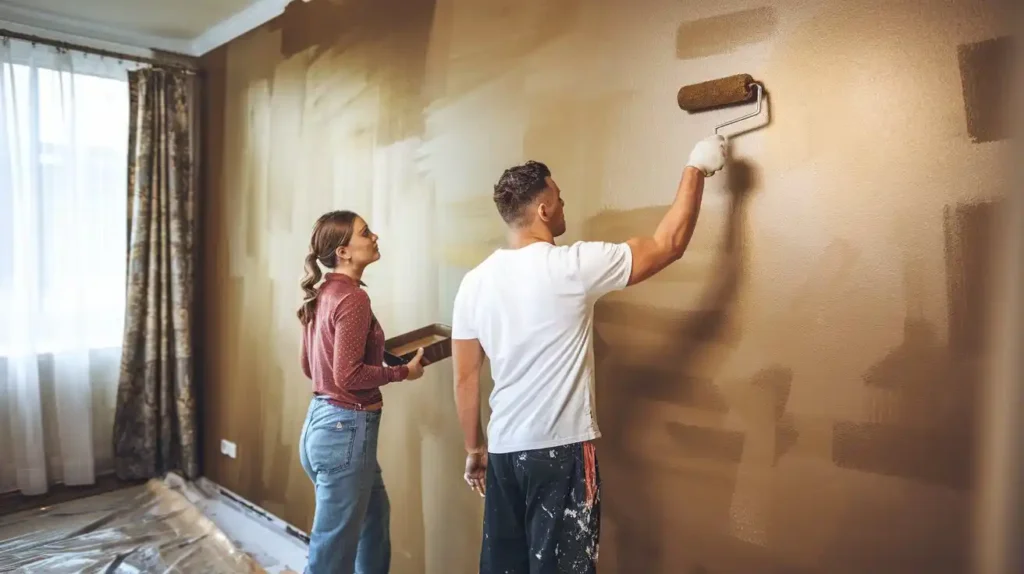
3. Apply Additional Coats
- Metallic paints typically require at least two to three coats to achieve full opacity and an even, luxurious appearance. Each coat builds depth and enhances the metallic shimmer.
- Be patient and let each coat dry completely before applying the next. Check the drying time on the paint can for guidance, as rushing this step can lead to uneven results.
4. Avoid Streaks
- To prevent streaks, use consistent, controlled strokes with both your brush and roller. Avoid pressing too hard; let the tools do the work.
- Consider using a paint extender, which slows drying time and gives you extra flexibility to blend each section seamlessly. This is especially helpful with metallic paints, as they tend to dry quicker and can show imperfections if not blended properly.
5. Inspect and Final Touches
- Once the final coat is dry, step back and inspect the wall under different lighting conditions. Metallic paints can reflect light differently, so check for any uneven areas or missed spots.
- If needed, touch up small imperfections with a fine brush to ensure a flawless finish. A little extra attention to detail can make all the difference!
Advanced Techniques and Tips
Want to take your metallic walls to the next level? Try these advanced techniques:
1. Achieving Texture
- Use tools like a sponge or rag while the paint is still wet to create unique textured effects, such as a marbled or stippled look. Experiment with dabbing or swirling motions to achieve different patterns.
- For a brushed metal finish, drag a clean, dry brush gently across the painted surface in long, even strokes. This technique works particularly well on furniture or accent walls to bring a sleek, modern touch.
2. Mixing and Matching
- Combine metallic paints with matte or satin finishes to add contrast and depth to your design. For example, pair a gold metallic stripe with a matte black background for a bold, dramatic look.
- Create a gradient effect by blending two metallic shades together, such as silver and rose gold, for a subtle, ombre-style transition. Use a soft, clean brush or sponge to blend seamlessly while the paint is still wet. This works beautifully on feature walls or decorative pieces.
3. Troubleshooting Common Issues
- Streaks: If streaks appear, use a dry roller or soft brush to gently blend uneven sections before the paint dries completely. Working quickly and evenly is key.
- Patchiness: To avoid patchiness, always apply thin, even layers of paint. Build up the color gradually with multiple coats if needed. Also, stir the paint frequently during use to ensure the metallic pigments remain evenly distributed.
- Peeling or uneven adherence: Make sure the surface is clean, dry, and properly primed before applying metallic paint, as these paints often require a smooth base for the best results.
FAQs
Bringing Metallic Elegance to Your Space
Metallic paint is a powerful tool for adding character to your home. Whether you use it to create a striking feature wall, update old furniture, or enhance architectural details, the results are always stunning.
Now it’s your turn to get creative and transform your space. Gather your materials, pick your favorite metallic shade, and start painting. If you’re ready to make a statement, metallic paint is your secret weapon.

I am Mindy Medford, a home décor, paint, and design specialist with over a decade of hands-on experience transforming ordinary spaces into cozy, personality-packed havens. Since 2013, I have been helping homeowners discover the art of beautiful yet practical design. I share my love for color, texture, and layout—making stylish interiors & exteriors feel achievable for everyone. Whether it’s picking the perfect paint shade or reimagining a small space, I’m here to guide and inspire.

